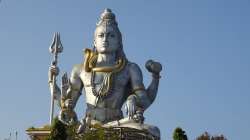Maha Shivratri 2020: Know history, significance, Muhurat and how to celebrate this important Hindu festival
Maha Shivratri 2020: According to popular beliefs, on this day, Lord Shiva drank the poison pot that came out from 'Samudra Manthan' between Gods and demons

The devotees of Lord Shiva can't control their excitement as they gear up for Maha Shivratri. Hindu festival Maha Shivratri which is also known as Padmarajarathri is celebrated every year in reverence of Lord Shiva. It is celebrated every year on the 13th night/14th day of the Maagha or Phalguna month of the Hindu calendar. This year Maha Shivratri falls on 21st February. Lord Shiva's devotees line up at Shiv Temples to offer their prayers on this day. They perform maha abhishekam where they bathe the Shiva Linga with milk.
History of Maha Shivratri
Maha Shivratri roughly translates to the 'Great Night of Shiva'. While there are many stories of this festival but according to common belief, on this day Lord Shiva drank the poison that came out from the ocean during the Samudra Manthan between gods and demons. Lord Shiva held the poison in his throat instead of swallowing it which made his throat blue. Shivji's name 'Neelkantha' is derived from this incident.
Mahashivratri 2020: Significance
Shivratri is considered especially auspicious for women. Married women pray for the well being of their husbands and sons, while unmarried women pray for an ideal husband like Shiva, who is the spouse of Kali, Parvati, and Durga. But generally, it is believed that anyone who utters the name of Shiva during Shivratri with pure devotion is freed from all sins. He or she reaches the abode of Shiva and is liberated from the cycle of birth and death.
Maha Shivratri 2020 Date, Time, Puja Mahurat
Maha Shivaratri falls on Friday, February 21, 2020
Nishita Kaal Puja Time - 12:09 AM to 01:00 AM, Feb 22
Duration - 00 Hours 51 Mins
On 22nd Feb, Shivaratri Parana Time - 06:54 AM to 03:25 PM
Ratri First Prahar Puja Time - 06:15 PM to 09:25 PM
Ratri Second Prahar Puja Time - 09:25 PM to 12:34 AM, Feb 22
Ratri Third Prahar Puja Time - 12:34 AM to 03:44 AM, Feb 22
Ratri Fourth Prahar Puja Time - 03:44 AM to 06:54 AM, Feb 22
Chaturdashi Tithi Begins - 05:20 PM on Feb 21, 2020
Chaturdashi Tithi Ends - 07:02 PM on Feb 22, 2020
(Source: drigpanchang.com)
Maha Shivratri 2020: Celebration
On Shiv ratri, devotees raise a three-tiered platform around a fire. The top plank represents 'swargaloka' (heaven), the middle one 'antarikshaloka' (space) and the bottom one 'bhuloka' (earth). 11 'kalash' are kept on the 'swargaloka' plank symbolizing 11 manifestations of 'Rudra' or destructive Rudra. These Kalash's are decorated with bael Patra (Aegle marmelos) and mango leaves and coconut at the top of the structure representing the head of shiva. The uncut shank of the coconut symbolizes his tangled hair and the three spots on the fruit Shiva's three eyes.
The phallus symbol representing Shiva is called the lingam. It is usually made of granite, soapstone, quartz, marble or metal.
Devotees circumambulate the lingam and worship it throughout the night. It is bathed every three hours with the 5 sacred offerings of a cow, called the 'panchagavya' - milk, sour milk, urine, butter, and dung. Then the 5 foods of immortality - milk, clarified butter, curd, honey and sugar are placed before the lingam. Dhatura fruit and flower, though poisonous, are believed to be sacred to Shiva and thus offered to him. The fast is broken only the next morning, after the nightlong worship.